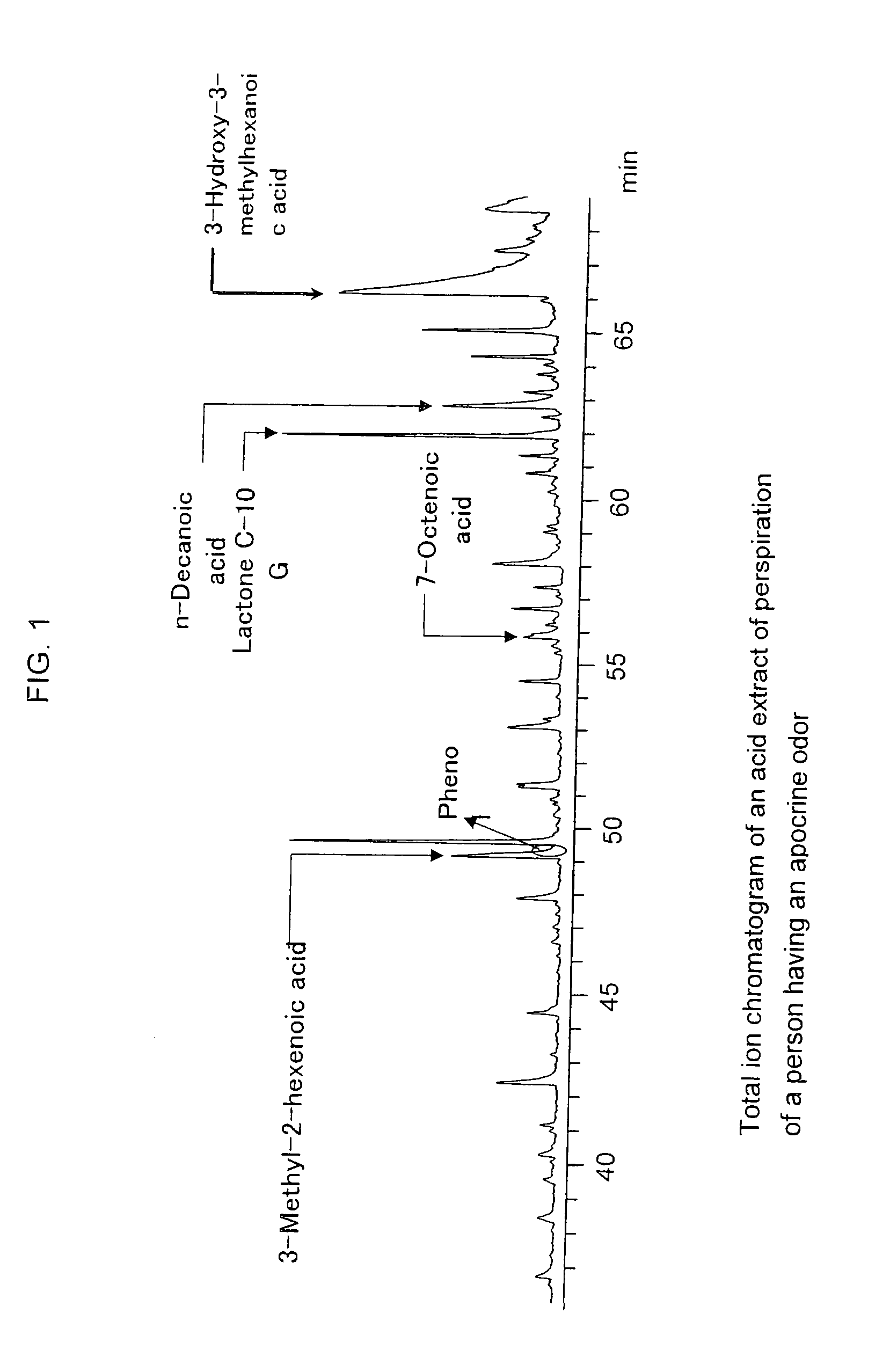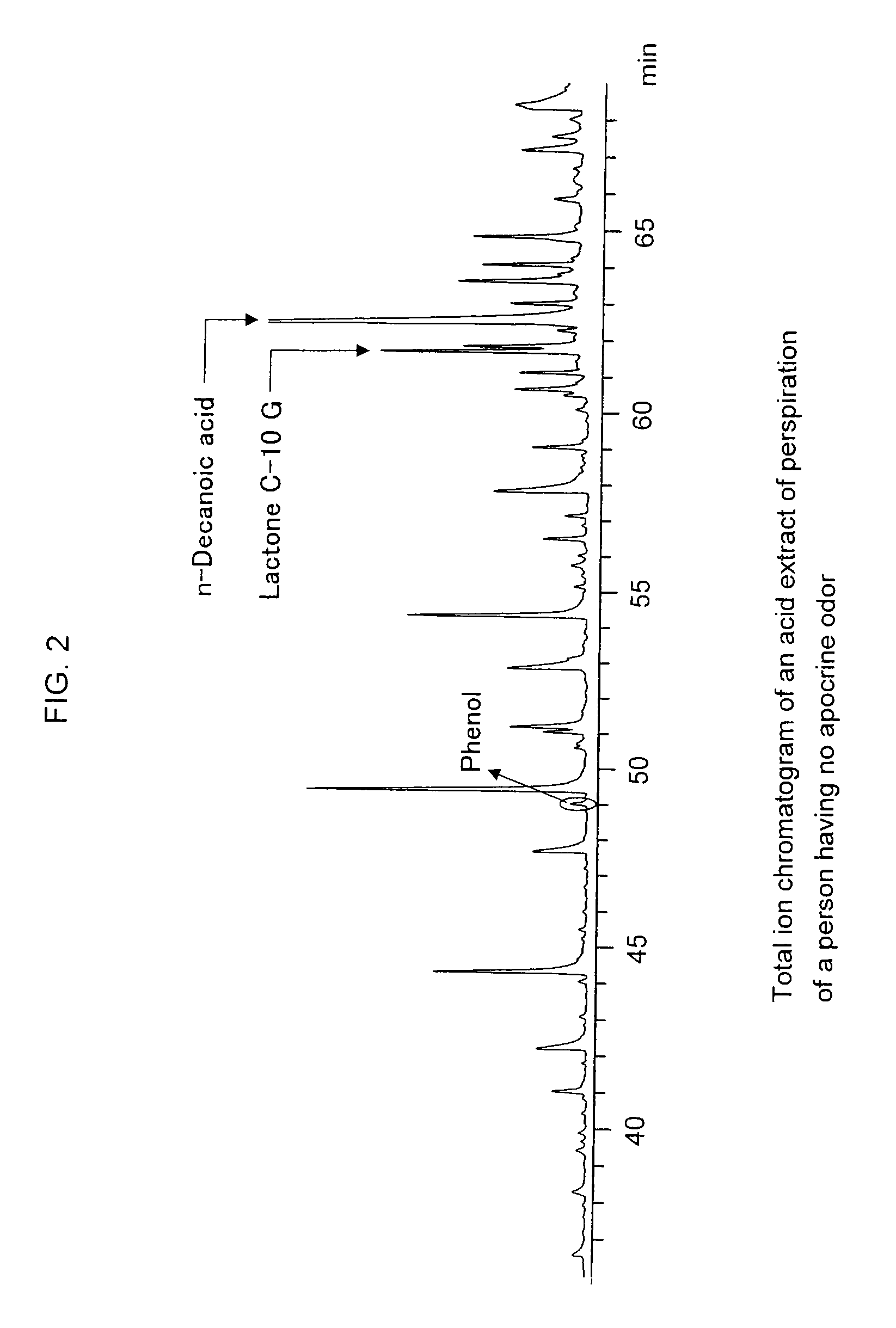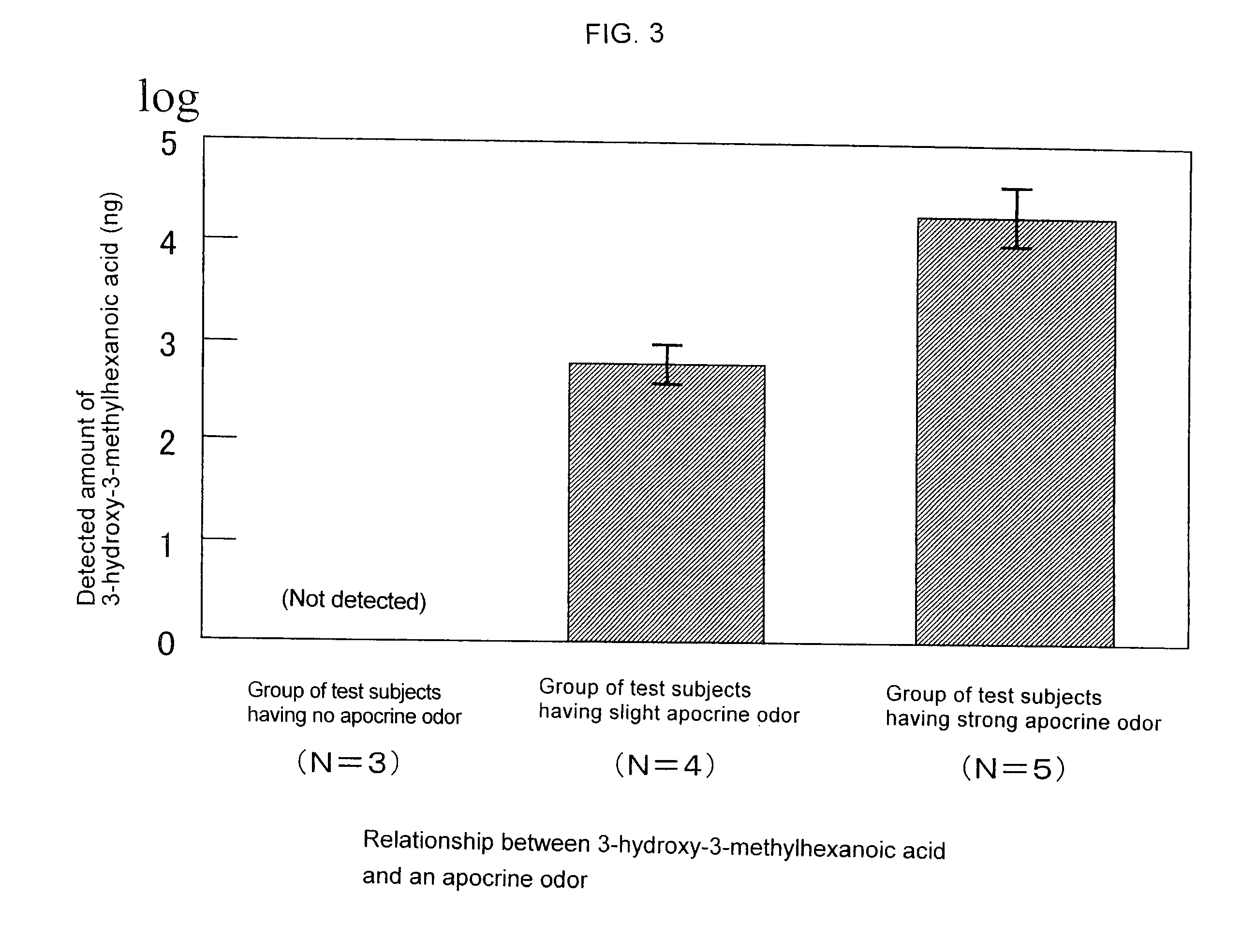Indicator for assessing body odor, process for producing the same, body odor assessment method, method of assessing efficaciousness of deodorant and kit for conveniently assessing body odor
a technology for assessing body odor and indicators, which is applied in the direction of disinfection, biochemistry apparatus and processes, instruments, etc., can solve the problems of difficulty in quantitative evaluation, inability to easily perform quantitative evaluation, and fatigue of the sense of smell, so as to achieve the effect of surely and easily assessing the level of apocrine odor
- Summary
- Abstract
- Description
- Claims
- Application Information
AI Technical Summary
Benefits of technology
Problems solved by technology
Method used
Image
Examples
example
[0208]The following examples further describe and demonstrate embodiments of the present invention. The examples are given solely for the purpose of illustration and are not to be construed as limitations of the present invention.
example a
1. Screening of Test Subjects
[0209]Each of 65 healthy Japanese males selected at random as test subjects wore a new white T-shirt made of cotton for 24 hours consecutively and the T-shirts were collected. An organoleptic test by 7 professional panel members was conducted on the axillary regions of the collected T-shirts concerning kinds and strength of axillary odor.
[0210]Acid odor: sour and putrefactive odor
Cumin-like apocrine odor: spicy, woody and animal-like odor
Sulfur-like apocrine odor: fishy and soy sauce and grapefruit-like odor
0: Odorless
[0211]1: Slight odor
2: Weak odor
3: Easily perceptible odor
4: Strong odor
5: Very strong odor
[0212]As a result, 28 people were recognized to have little axillary odor (the strength of odor of these people was 1 or less) (herein after referred as Group A), 21 people were recognized to have weak axillary odor (the highest strength of odor of these people was 2 or 3) (herein after referred as Group B), and 16 people were recognized to have stron...
example b
1. Preparation of an Indicator Material for Assessing Body Odor
[0231]Mixtures of 3-hydroxy-3-methylhexanoic acid (Substance (A)) and 3-mercapto-3-methylhexanol (Substance (C)) was prepared at a 0.015% diluted concentration in ethanol, wherein Substance (A):Substance (C)=50:1, 100:1 and 200:1, as indicator materials for assessing body odor for Example B-1, B-2 and B-3 respectively. Also, a 0.015% diluted solution of 3-methyl-2-hexenoic acid in ethanol was prepared as an indicator material for assessing body odor for Comparative Example B-2.
2. Evaluation of a Deodorizing and Masking Effect of an Indicator Material for Assessing Body Odor Against an Apocrine Odor
[0232]The test subjects were 6 people in the Group A (who were recognized to have no axillary odor) of Example A. Each of the above-mentioned indicator materials for assessing body odor (Examples B-1 to B-3 in Table 2) was sprayed to an axillary region of each test subjects once (about 30 mg) to apply the indicator material for...
PUM
| Property | Measurement | Unit |
|---|---|---|
| incubation time | aaaaa | aaaaa |
| incubation time | aaaaa | aaaaa |
| incubation time | aaaaa | aaaaa |
Abstract
Description
Claims
Application Information
 Login to View More
Login to View More - R&D
- Intellectual Property
- Life Sciences
- Materials
- Tech Scout
- Unparalleled Data Quality
- Higher Quality Content
- 60% Fewer Hallucinations
Browse by: Latest US Patents, China's latest patents, Technical Efficacy Thesaurus, Application Domain, Technology Topic, Popular Technical Reports.
© 2025 PatSnap. All rights reserved.Legal|Privacy policy|Modern Slavery Act Transparency Statement|Sitemap|About US| Contact US: help@patsnap.com



